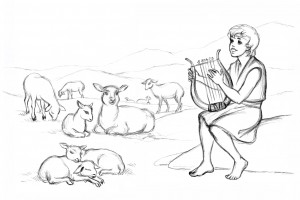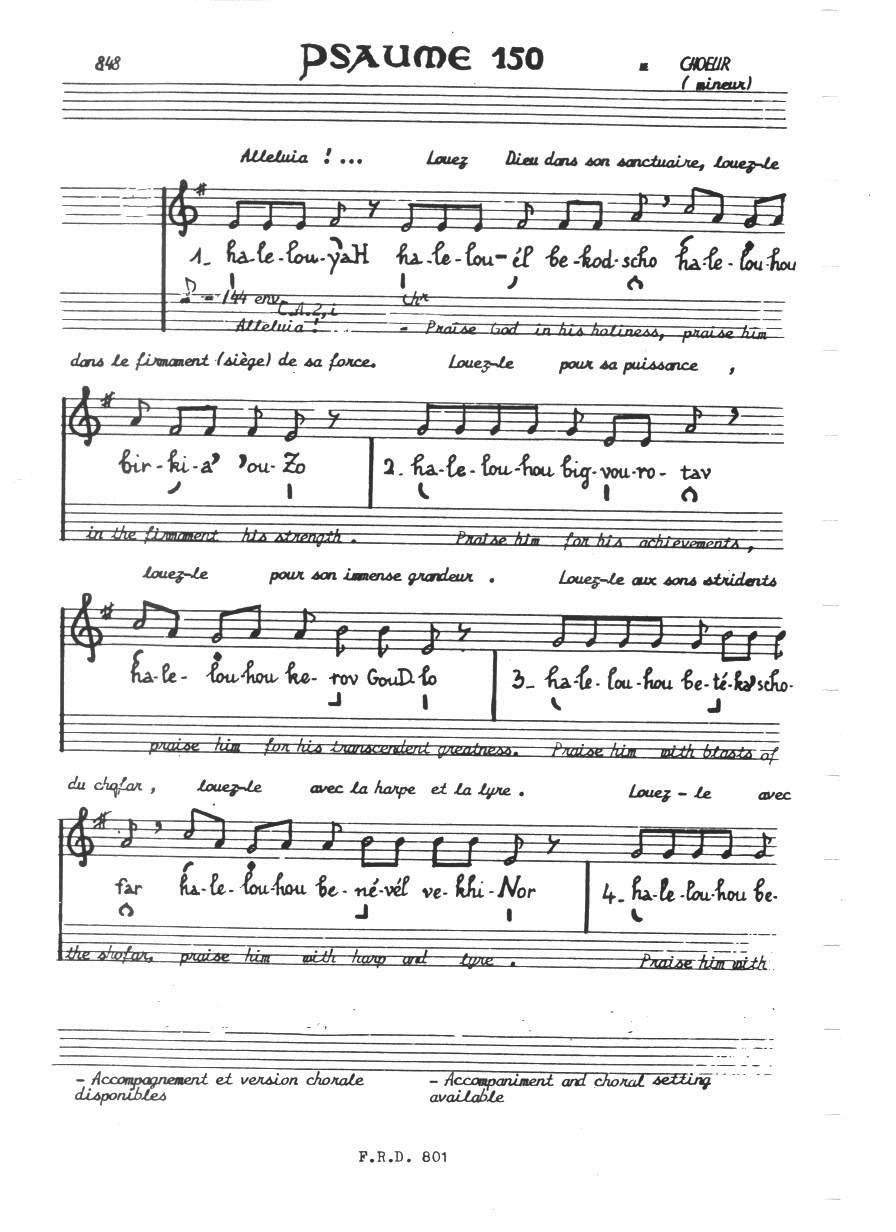In my continuing research for interesting liturgical music to play on my three Irish wire-strung harps in church, I recently came across the work of the late French archaeomusicologist and organist Suzanne Haïk-Vantoura (1912-2000). She is best known for her book La Musique de la Bible revélée (1st ed.: 1976), a study in which the cantillation marks of the Hebrew Scriptures could be successfully transcribed to modern music notation. These marks, known as te’amim, are melodic accents in the original Hebrew script.
Her system is complex and her first book, written in French, was later translated into English (1991) but is quite pricey, even on the used book market. For those that are interested, more in-depth coverage is available here, including a pdf download of the English translation.
French harpist Esther Lamandier recorded her music score interpretations of the Biblical manuscripts. It’s important to be aware that’s been some criticism of Haïk-Vantoura’s concept by other musicologists, the most significant point being that it is essentially a hypothesis that uses Western music theory and structures to build a body of playable and singable sheet music, which may or may not be what was actually done in King David’s time.
Still, authenticity debates aside, there may well be a grain (or two or three) of historical accuracy in Haïk-Vantoura’s work and efforts like hers can invite others to investigate the Hebrew Scriptures more in depth to find out what King David’s psalms may have really sounded like.
Also it’s worth noting that he most likely didn’t play an Irish wire-strung harp! Or any kind of harp that we’re familiar with in the Western world today (think orchestra pedal harps, today’s popular Celtic harps, etc.). More likely he played a kinnor, possibly one that looked like this (Lyre of Har Meggido) or maybe this (Kinnor David, House of Harrari, Jerusalem). Certainly he wasn’t reading sheet music as we know it! (The modern five stave notation system with clefs and other symbols is a comparatively recent invention.)
The Psalm scores are interesting nonetheless, because you can try them out on your harp and imagine for yourself, if all or part of this is what King David actually did play on his lyre (kinnor), you can now recreate that worship experience for yourself and others.
The sheet music is downloadable here. There are also other books of the Hebrew Bible that are available in sheet music form at this Dropbox link. All are handwritten scores by Suzanne Haïk-Vantoura and as such are not typeset. They are quite legible however.
Since the kinnor has about 10 strings (give or take, but it’s generally in that range), you can play just the melody as written on your harp, or you can choose to harmonize it or even add Baroque ornaments to it, if you are playing one of the Psalms as an instrumental piece with no singing. They may or may not adhere to strict Western notions of tempo and rhythm; she doesn’t appear to have indicated metronome markings either. It might also be the case that these pieces speed up and slow down considerably, similar to speech. This, of course, is all speculation on my part.
However, they are an interesting doorway to Bible study!
King David Illustration 257572988 © Maryna Kriuchenko | Dreamstime.com (Ukrainian artist)
Photo of King David Painting 92080543 / King David © Hannah Babiak | Dreamstime.com



